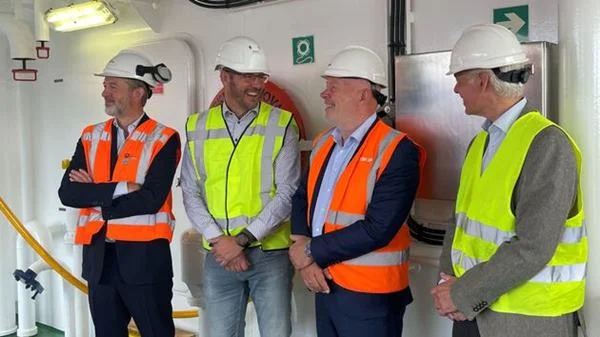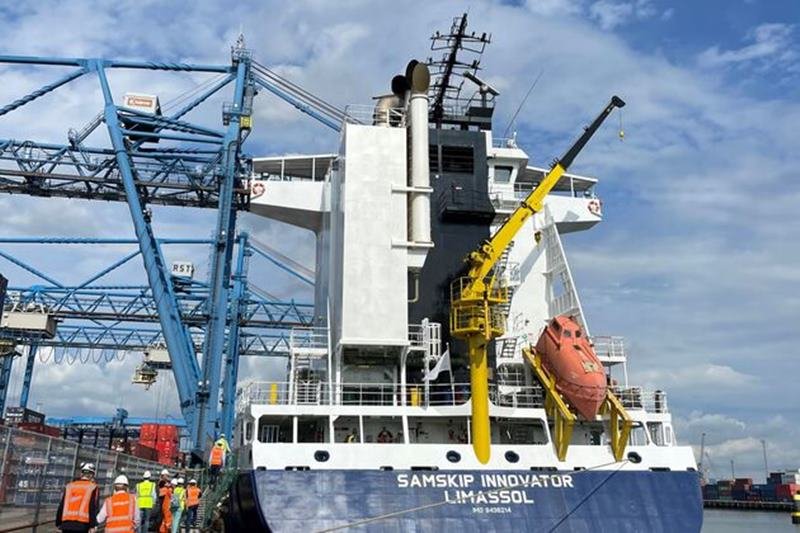Rotterdam Shortsea Terminals (RST) and shipping company Samskip, in partnership with the Port of Rotterdam Authority, have put into service a shore-based power installation, as yet in a trial phase.
Starting from 2030, European regulations will mandate container ships larger than 5000GT to utilise shore-based power. Currently, there is no established standard for receiving shore-based power using a low-voltage installation, unlike the existing standard for receiving shore power with a high-voltage installation.
This trial at RST aims to explore if operating a low-voltage installation at a frequency of 50Hz, instead of 60Hz, is adequate for short-sea vessels. Using a lower frequency for the shore-based power installation leads to substantial cost savings.
The terminal has taken the responsibility of building the installation, and the Samskip Innovator vessel has been adapted to utilise this new power source. The Port of Rotterdam Authority is closely involved in the pilot and looking forward to the results.
This initiative marks the first-ever shore-based power installation at a container terminal in the Netherlands.

The port of Rotterdam is working on the transition from fossil energy to sustainable energy. Shore-based power is an important aspect of this. Every year, some tens of thousands of vessels put in at the port of Rotterdam.
Moored at the quay, these vessels still use their generators for the energy required on board. The generators emit particulate matter, nitrogen, and carbon dioxide. Shore-based power makes reducing these emissions possible by providing a clean energy source for these vessels.
Approach to shore-based power
The municipality of Rotterdam and the Port of Rotterdam Authority conduct a joint strategy and development programme to accelerate and scale up shore-based power for sea-going vessels, with the aim of having a high percentage of sea-going vessels plugged in at the quay by 2030. Diesel generators can then be switched off, which is favourable for air quality and carbon neutrality. In the next five years, the municipality and the port together with the companies in the port and the shipping companies will be working on accelerating and scaling up shore-based power. Depending on the experiences gained by these efforts, the targets can be adjusted in 2025.
Source Port of Rotterdam

